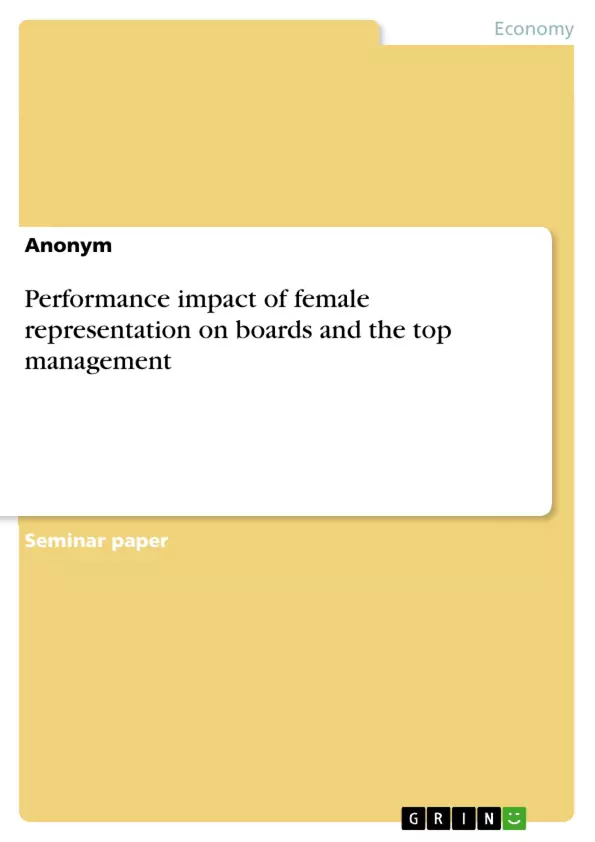Due to the under-representation of female directors within the top management and boards of organizations, many countries have introduced laws to challenge this development and encourage female representation in the highest echelons, for instance through the introduction of a female quota. While Norway (2003) and Spain (2007) have been the first countries that introduced such a quota, many other nations have followed. This development leads to the question whether female representation on boards and in the top management has an impact on company performance.
Inhaltsverzeichnis (Table of Contents)
- The increasing trend of more women in work and the under-representation of female executives on boards and in the top management.
- Possible Reasons for low female ratio in leadership positions.
- Characteristics of top executives
- Performance impact of female representation on boards and in the top management
- Difference between top management and boards.
- Non-financial performance impact
- Diversity
- Indirect performance impacts
- Financial Performance
- Definition and measure possibilities
- Positive Influence
- No influence
- Critical mass
- Actions to encourage women in leadership positions.
- Conclusion, Limitations and future research directions
- Conclusion
- Limitations and future research directions
Zielsetzung und Themenschwerpunkte (Objectives and Key Themes)
This paper aims to investigate the impact of female representation on boards and in top management on company performance. It explores the reasons behind the under-representation of women in leadership positions and examines the potential positive and negative effects of increased female representation on both financial and non-financial aspects of company performance.
- The increasing trend of women in the workforce and the persistent under-representation of women in leadership roles.
- Factors contributing to the low female ratio in leadership positions.
- The impact of female representation on company performance, both financially and non-financially.
- The concept of "critical mass" in relation to female representation.
- Actions and policies that can encourage women in leadership positions.
Zusammenfassung der Kapitel (Chapter Summaries)
- Chapter 1 presents the current state of female representation in the workforce, particularly highlighting the significant under-representation of women in top management positions despite increased female participation in the labor market. It also discusses the growing global trend towards promoting female leadership.
- Chapter 2 explores possible reasons for the low female quota in leadership positions, emphasizing the role of factors like part-time work, family care responsibilities, and potential biases within organizations.
- Chapter 3 focuses on the different perspectives and characteristics of top executives, providing an understanding of the various roles and tasks that contribute to the decision-making process.
- Chapter 4 delves into the performance impact of female representation. It distinguishes between top management and boards, considering their distinct roles in different countries. The chapter examines the non-financial impact of female representation, including aspects like diversity and indirect performance effects, and then investigates its financial performance impact, analyzing both positive and potentially neutral influences.
- Chapter 5 explores actions and initiatives aimed at encouraging women in leadership positions, considering various approaches to promoting greater female representation in top management roles.
Schlüsselwörter (Keywords)
The primary keywords and concepts explored in this paper include female representation, leadership positions, board diversity, top management, company performance, financial performance, non-financial performance, diversity, critical mass, gender equality, and quota policies.
- Quote paper
- Anonym (Author), 2022, Performance impact of female representation on boards and the top management, Munich, GRIN Verlag, https://www.grin.com/document/1283181



